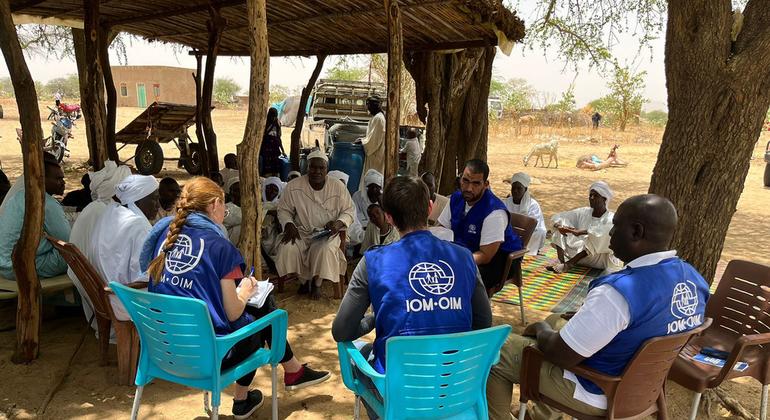It can be tough to access front-line health care outside the cities and suburbs. For the seven million Australians living in rural communities there are significant challenges in accessing health care due to serious workforce shortages, geographic isolation and socioeconomic disadvantage. This results in rural people having poorer quality of life, and long-term poor health outcomes.
Primary health care is the entry point into the health system. It includes care delivered in community settings such as general practice, health centres and allied health practices. It can be delivered via telehealth where face-to-face services are unavailable.
But there is a critical shortage of general practitioners (GPs) in rural areas. The Royal Australian College of General Practitioners (RACGP) paints a grim picture of an ageing GP workforce, a declining interest in general practice as a career choice and unequal distribution of GPs between urban and rural areas.
Experts are searching for ways to “fix the GP crisis”, but we can look at the broader picture and ask: “How else might we address the primary health care needs of rural communities?” Highly trained nurses in rural areas could be part of that response – if we support them properly.
Medicare reform is off to a promising start. Now comes the hard part
What makes a nurse practitioner?
There are more than 2,250 nurse practitioners currently trained, qualified and registered to provide services in Australia. Nurse practitioners are the most senior and experienced clinical nurses in the health care workforce.
Nurse practitioners complete a master’s degree and have a minimum of eight years of consolidated clinical practice and expertise.
But nurse practitioners can’t access Medicare rebates or the Pharmaceutical Benefits Scheme unless they enter into a collaborative arrangement with a GP.
Under this arrangement, GPs effectively “supervise” the work of nurse practitioners. This fails to recognise nurse practitioners’ high levels of clinical expertise and skills, which should allow them autonomy.
The physio will see you now. Why health workers need to broaden their roles to fix the workforce crisis
What nurse practitioners can do
In Australia, nurse practitioners are not working to their full capacity or “scope of practice” according to the Australian College of Nurse Practitioners. This scope gives them the legal authority to practice independently and autonomously, unlike registered nurses.
They can assess and diagnose health problems, order and interpret diagnostic tests, create and monitor treatment plans, prescribe medicines and refer patients to other health professionals. Nurse practitioners are qualified to admit and discharge patients from health services, including hospitals.
At the public health level, nurse practitioners can collaborate with other clinicians and health experts to improve health care access, prevent disease and promote health strategies, improving outcomes for specific patient groups or communities.
The federal government’s Strengthening Medicare Taskforce lists nurse practitioners as primary carers and puts general practice “at the heart of primary care provision”. But the RACGP and Australian Medical Association (AMA) say nurse practitioner care should be GP-led. They contend any change to this arrangement would lead to inferior care, a disruption in continuity of care, fragmentation of the health system, and increased care complexity, inefficiency and cost. We have looked closely at these arguments and found they are not supported by evidence.

Shutterstock
How do you fix general practice? More GPs won’t be enough. Here’s what to do
What works overseas
Nurse practitioners have been working as lead practitioners internationally for many years, which means there is a body of evidence looking at patient outcomes and satisfaction.
Experts found nurse practitioners provide equivalent and, in some cases, superior patient outcomes compared to doctors across a range of primary, secondary and specialist care settings and for a broad range of patient conditions.
Nurse practitioners were more likely to follow recommended evidence-based guidelines for best practice care and patients were more satisfied with the care they received, reporting communication regarding patient illness was better compared to GP care.
Employing nurse practitioners also resulted in reduced waiting times and costs.
Finally, these studies found while patient consultations were slightly longer for nurse practitioners and the number of return visits slightly higher compared to doctors, there was no difference in the number of prescriptions or diagnostic tests issued, attendance at Emergency Departments, hospital referrals or hospital admissions.
Clearing the way
GP practices are closing in rural communities all over Australia, leaving people without access to vital, cost-effective primary health care services. Yet the majority of nurse practitioners are ready and willing to work in rural areas, with 2019 workforce distribution data clearly showing many nurse practitioners already work in rural, remote and very remote communities.
A new way of working is required, one that includes nurse practitioners working both independently and in collaboration with health care teams in rural communities.
International evidence shows allowing nurse practitioners to lead patient care and work with greater flexibility and freedom will not fragment the primary health care system, it will enhance it.




